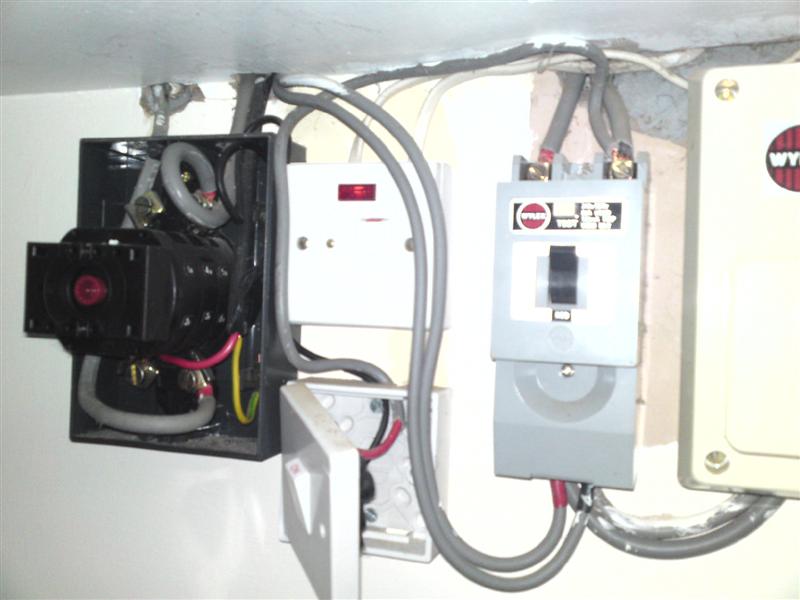Work this one out...
4mm split concentric from generator to change over switch.
16mm tails from DNO meter to this switch gear mess.
10mm tails out of RCD to run a submain in a barn (jointed to 16mm split in loft).
16mm tails out of RCD to house CU.
Can you work out what they have done with the changeover?!
Not good.



4mm split concentric from generator to change over switch.
16mm tails from DNO meter to this switch gear mess.
10mm tails out of RCD to run a submain in a barn (jointed to 16mm split in loft).
16mm tails out of RCD to house CU.
Can you work out what they have done with the changeover?!
Not good.




